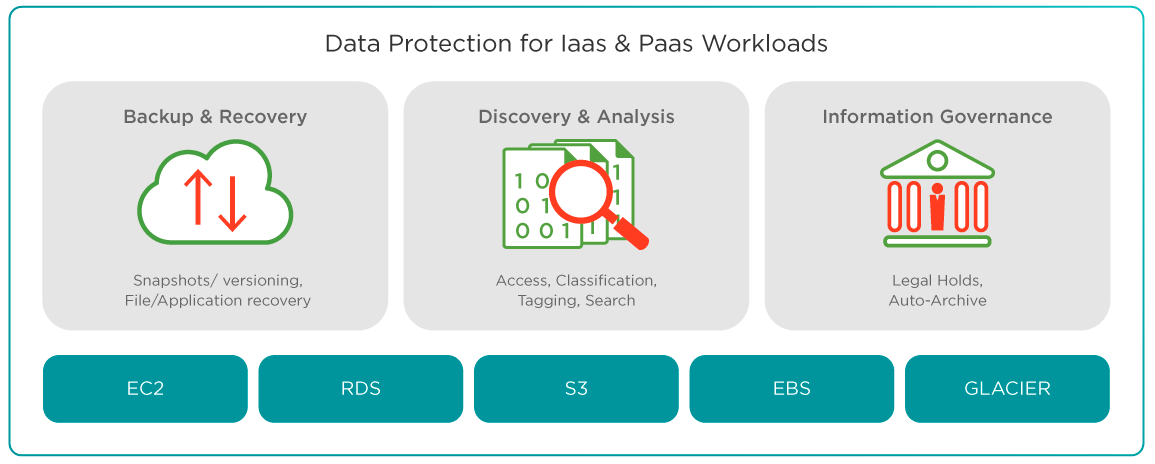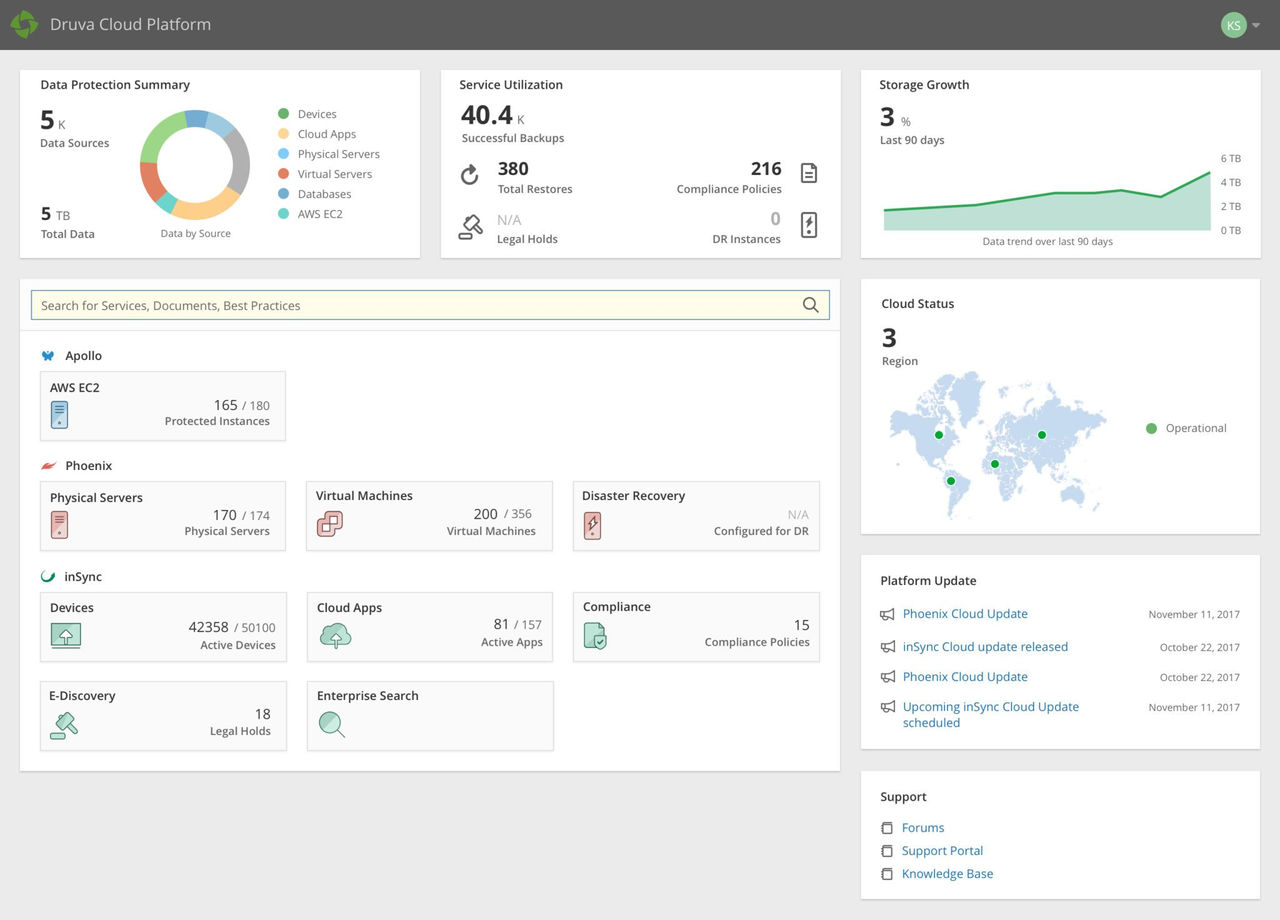The accelerating adoption of cloud platforms by organizations has created a new set of technology challenges that require a deeper understanding of data usage and lifecycle management as well as the development of a more holistic data protection model that spans on-premises and cloud environments. Gartner research predicts that by 2017, infrastructure as a Service (IaaS) and platform as a service (PaaS) in public clouds are expected to grow by 36.8% ($34.6B) and 22.6% ($8.8B), respectively. Trends like these indicate a significant shift in how organizations are adopting public cloud solutions for their infrastructure and application workloads.
“Hybrid IT is the new paradigm. Many organizations plan to retain a number of servers on-premises that will still need to be managed and protected, so they are looking for a solution that provides them with this level of flexibility.”
What We’ve Learned from Customers
While working closely with the businesses that are grappling with these issues and using Druva to help address them, we’ve gained some important insight into what the critical needs are.
- A “cloud first” strategy is no longer a buzzword—it has actually become a standard term within companies.
- Organizations are waking up to the reality that the adoption of the public cloud is a worthwhile path to standardizing and streamlining their infrastructure.
- Companies are taking a phased approach to cloud adoption. For example:
- Some organizations are in early phases of cloud adoption, with pilot workloads in place, and plan to transition more production workloads to the public cloud in the next 6 to12 months.
- Other early adopters have 80% of their workloads already in public cloud. They are now looking at solutions optimized for public cloud data protection and cost management for their environments.
- Hybrid IT is the new paradigm. Many organizations plan to retain a number of servers on-premises that will still need to be managed and protected, so they are looking for a solution that provides them with this level of flexibility.
- IT teams need centralized snapshot services and recovery across multiple AWS regions and accounts in order to meet the SLA requirements of the business.
- Visibility into sources, usage, and data age will be crucial, as well as the automated management of retention and the archiving of data in S3 and Glacier.
- Replication and workload mobility for application test and development will be needed in order to make the necessary investments in time and resources for cloud workload migration.
- Organizations cannot ignore the governance, eDiscovery, and compliance needs of each line of business. Many of these organizations have found themselves under tremendous pressure to provide real answers in order to deliver on the promises they’ve made for meeting these challenges.
Key Challenges
- Complete Data Protection — Public cloud usage is not immune to migration errors, accidental deletions, outages, or rogue-application issues. Public cloud usage is a shared responsibility—each organization is responsible for protecting its own account usage. Traditional data protection solutions used in on-premises data centers are not optimized to handle public cloud sources like AWS EC2, RDS, or DynamoDB.
- Cost Control — Public cloud usage could get very costly if not used effectively. Customers have reported spending 50% of their primary infrastructure budget for retaining point-in-time copies (snapshots).
- Lack of Visibility — Different business units with separate accounts on public clouds are using various public cloud resources that are adding to the data growth and leading to additional hidden costs.
- Compliance — Not understanding or having visibility into the kind of data residing across services like AWS S3 or Glacier could lead to GDPR non-compliance, regulatory, or contract violations.
Druva Apollo Highlights
Druva Apollo is the only Software-as-a-Service (SaaS)-based data protection solution that enables backup and recovery with lifecycle management for Amazon EC2 (AMI), S3, EBS, RDS, and Glacier across multiple AWS regions and accounts from a single interface.
- Backup and Recovery – The Druva Cloud Platform provides snapshot management for the backup, recovery, and replication of your AWS instances. It uses common SLA policy automation with global orchestration, including file-level recovery with near-zero RTO. It also offers data protection of AWS sources like EC2 instances by using global orchestration of snapshot management and AWS native capabilities.
- Discovery and Analysis – Druva Cloud’s data access, classification, tagging, and search capabilities provide comprehensive visibility and manageability across multiple regions and accounts. Auto-discovery of sources helps our customers understand storage and data usage. And our proactive instance management coupled with efficient resource utilization results in dramatically lower TCO.
- Information Governance – Druva Cloud Platform features such as legal hold, review and audit, and eDiscovery enablement for backups, snapshots, and images provide the data flexibility required for legal, compliance, and analytics needs. In addition, the platform’s investigative search and auto-archival capabilities provide additional risk management and regulatory alignment.


